Hua Lu
MovSemCL: Movement-Semantics Contrastive Learning for Trajectory Similarity
Nov 15, 2025Abstract:Trajectory similarity computation is fundamental functionality that is used for, e.g., clustering, prediction, and anomaly detection. However, existing learning-based methods exhibit three key limitations: (1) insufficient modeling of trajectory semantics and hierarchy, lacking both movement dynamics extraction and multi-scale structural representation; (2) high computational costs due to point-wise encoding; and (3) use of physically implausible augmentations that distort trajectory semantics. To address these issues, we propose MovSemCL, a movement-semantics contrastive learning framework for trajectory similarity computation. MovSemCL first transforms raw GPS trajectories into movement-semantics features and then segments them into patches. Next, MovSemCL employs intra- and inter-patch attentions to encode local as well as global trajectory patterns, enabling efficient hierarchical representation and reducing computational costs. Moreover, MovSemCL includes a curvature-guided augmentation strategy that preserves informative segments (e.g., turns and intersections) and masks redundant ones, generating physically plausible augmented views. Experiments on real-world datasets show that MovSemCL is capable of outperforming state-of-the-art methods, achieving mean ranks close to the ideal value of 1 at similarity search tasks and improvements by up to 20.3% at heuristic approximation, while reducing inference latency by up to 43.4%.
Large Foundation Model for Ads Recommendation
Aug 20, 2025


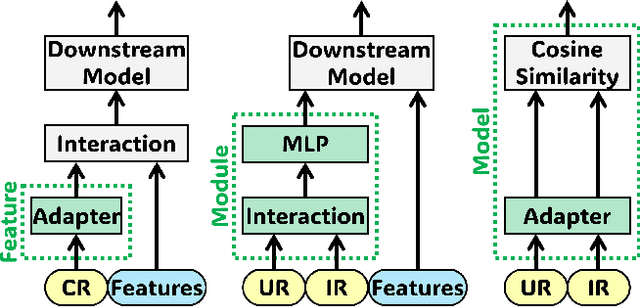
Abstract:Online advertising relies on accurate recommendation models, with recent advances using pre-trained large-scale foundation models (LFMs) to capture users' general interests across multiple scenarios and tasks. However, existing methods have critical limitations: they extract and transfer only user representations (URs), ignoring valuable item representations (IRs) and user-item cross representations (CRs); and they simply use a UR as a feature in downstream applications, which fails to bridge upstream-downstream gaps and overlooks more transfer granularities. In this paper, we propose LFM4Ads, an All-Representation Multi-Granularity transfer framework for ads recommendation. It first comprehensively transfers URs, IRs, and CRs, i.e., all available representations in the pre-trained foundation model. To effectively utilize the CRs, it identifies the optimal extraction layer and aggregates them into transferable coarse-grained forms. Furthermore, we enhance the transferability via multi-granularity mechanisms: non-linear adapters for feature-level transfer, an Isomorphic Interaction Module for module-level transfer, and Standalone Retrieval for model-level transfer. LFM4Ads has been successfully deployed in Tencent's industrial-scale advertising platform, processing tens of billions of daily samples while maintaining terabyte-scale model parameters with billions of sparse embedding keys across approximately two thousand features. Since its production deployment in Q4 2024, LFM4Ads has achieved 10+ successful production launches across various advertising scenarios, including primary ones like Weixin Moments and Channels. These launches achieve an overall GMV lift of 2.45% across the entire platform, translating to estimated annual revenue increases in the hundreds of millions of dollars.
A Comprehensive Survey of Reward Models: Taxonomy, Applications, Challenges, and Future
Apr 12, 2025Abstract:Reward Model (RM) has demonstrated impressive potential for enhancing Large Language Models (LLM), as RM can serve as a proxy for human preferences, providing signals to guide LLMs' behavior in various tasks. In this paper, we provide a comprehensive overview of relevant research, exploring RMs from the perspectives of preference collection, reward modeling, and usage. Next, we introduce the applications of RMs and discuss the benchmarks for evaluation. Furthermore, we conduct an in-depth analysis of the challenges existing in the field and dive into the potential research directions. This paper is dedicated to providing beginners with a comprehensive introduction to RMs and facilitating future studies. The resources are publicly available at github\footnote{https://github.com/JLZhong23/awesome-reward-models}.
Not All Data are Good Labels: On the Self-supervised Labeling for Time Series Forecasting
Feb 21, 2025Abstract:Time Series Forecasting (TSF) is a crucial task in various domains, yet existing TSF models rely heavily on high-quality data and insufficiently exploit all available data. This paper explores a novel self-supervised approach to re-label time series datasets by inherently constructing candidate datasets. During the optimization of a simple reconstruction network, intermediates are used as pseudo labels in a self-supervised paradigm, improving generalization for any predictor. We introduce the Self-Correction with Adaptive Mask (SCAM), which discards overfitted components and selectively replaces them with pseudo labels generated from reconstructions. Additionally, we incorporate Spectral Norm Regularization (SNR) to further suppress overfitting from a loss landscape perspective. Our experiments on eleven real-world datasets demonstrate that SCAM consistently improves the performance of various backbone models. This work offers a new perspective on constructing datasets and enhancing the generalization of TSF models through self-supervised learning.
Poly2Vec: Polymorphic Encoding of Geospatial Objects for Spatial Reasoning with Deep Neural Networks
Aug 27, 2024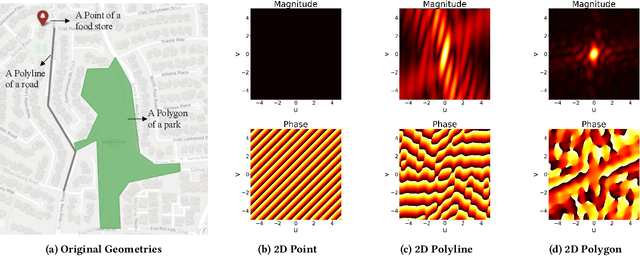
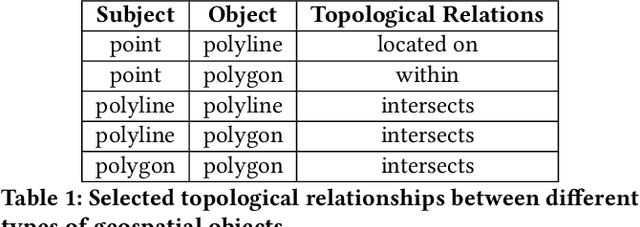


Abstract:Encoding geospatial data is crucial for enabling machine learning (ML) models to perform tasks that require spatial reasoning, such as identifying the topological relationships between two different geospatial objects. However, existing encoding methods are limited as they are typically customized to handle only specific types of spatial data, which impedes their applicability across different downstream tasks where multiple data types coexist. To address this, we introduce Poly2Vec, an encoding framework that unifies the modeling of different geospatial objects, including 2D points, polylines, and polygons, irrespective of the downstream task. We leverage the power of the 2D Fourier transform to encode useful spatial properties, such as shape and location, from geospatial objects into fixed-length vectors. These vectors are then inputted into neural network models for spatial reasoning tasks.This unified approach eliminates the need to develop and train separate models for each distinct spatial type. We evaluate Poly2Vec on both synthetic and real datasets of mixed geometry types and verify its consistent performance across several downstream spatial reasoning tasks.
Missing Value Imputation for Multi-attribute Sensor Data Streams via Message Propagation (Extended Version)
Nov 14, 2023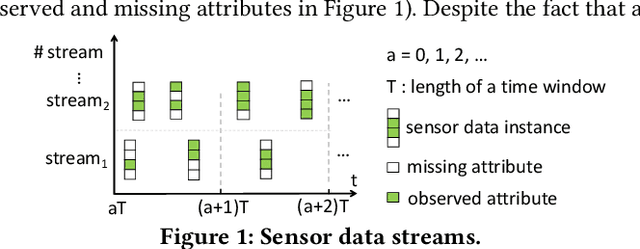
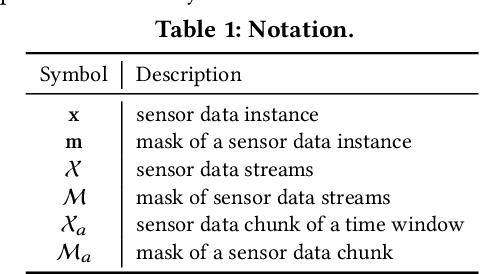
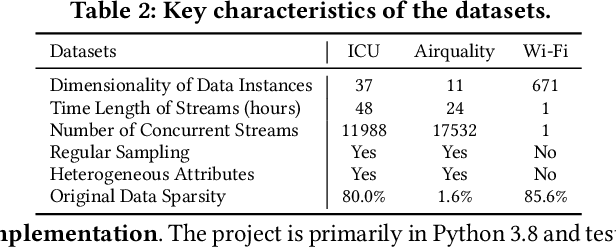
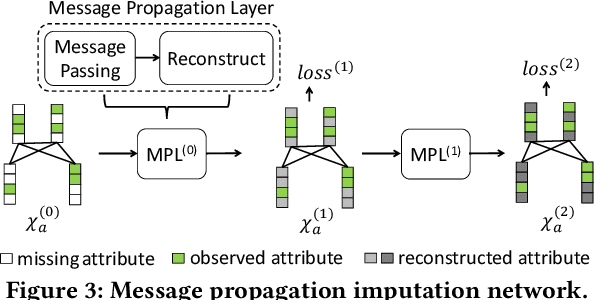
Abstract:Sensor data streams occur widely in various real-time applications in the context of the Internet of Things (IoT). However, sensor data streams feature missing values due to factors such as sensor failures, communication errors, or depleted batteries. Missing values can compromise the quality of real-time analytics tasks and downstream applications. Existing imputation methods either make strong assumptions about streams or have low efficiency. In this study, we aim to accurately and efficiently impute missing values in data streams that satisfy only general characteristics in order to benefit real-time applications more widely. First, we propose a message propagation imputation network (MPIN) that is able to recover the missing values of data instances in a time window. We give a theoretical analysis of why MPIN is effective. Second, we present a continuous imputation framework that consists of data update and model update mechanisms to enable MPIN to perform continuous imputation both effectively and efficiently. Extensive experiments on multiple real datasets show that MPIN can outperform the existing data imputers by wide margins and that the continuous imputation framework is efficient and accurate.
LightCTS: A Lightweight Framework for Correlated Time Series Forecasting
Feb 27, 2023



Abstract:Correlated time series (CTS) forecasting plays an essential role in many practical applications, such as traffic management and server load control. Many deep learning models have been proposed to improve the accuracy of CTS forecasting. However, while models have become increasingly complex and computationally intensive, they struggle to improve accuracy. Pursuing a different direction, this study aims instead to enable much more efficient, lightweight models that preserve accuracy while being able to be deployed on resource-constrained devices. To achieve this goal, we characterize popular CTS forecasting models and yield two observations that indicate directions for lightweight CTS forecasting. On this basis, we propose the LightCTS framework that adopts plain stacking of temporal and spatial operators instead of alternate stacking that is much more computationally expensive. Moreover, LightCTS features light temporal and spatial operator modules, called L-TCN and GL-Former, that offer improved computational efficiency without compromising their feature extraction capabilities. LightCTS also encompasses a last-shot compression scheme to reduce redundant temporal features and speed up subsequent computations. Experiments with single-step and multi-step forecasting benchmark datasets show that LightCTS is capable of nearly state-of-the-art accuracy at much reduced computational and storage overheads.
PLATO-K: Internal and External Knowledge Enhanced Dialogue Generation
Nov 02, 2022

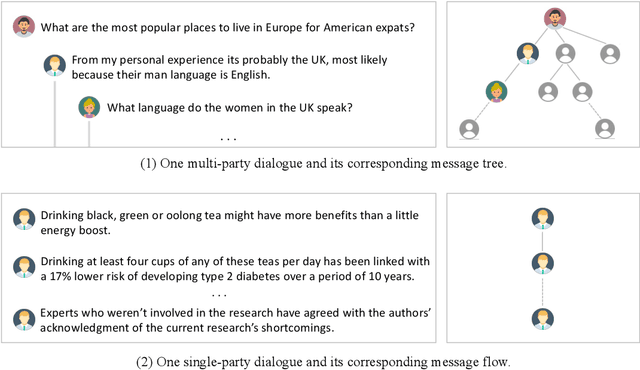

Abstract:Recently, the practical deployment of open-domain dialogue systems has been plagued by the knowledge issue of information deficiency and factual inaccuracy. To this end, we introduce PLATO-K based on two-stage dialogic learning to strengthen internal knowledge memorization and external knowledge exploitation. In the first stage, PLATO-K learns through massive dialogue corpora and memorizes essential knowledge into model parameters. In the second stage, PLATO-K mimics human beings to search for external information and to leverage the knowledge in response generation. Extensive experiments reveal that the knowledge issue is alleviated significantly in PLATO-K with such comprehensive internal and external knowledge enhancement. Compared to the existing state-of-the-art Chinese dialogue model, the overall engagingness of PLATO-K is improved remarkably by 36.2% and 49.2% on chit-chat and knowledge-intensive conversations.
Towards Boosting the Open-Domain Chatbot with Human Feedback
Aug 30, 2022



Abstract:Many open-domain dialogue models pre-trained with social media comments can generate coherent replies but have difficulties producing engaging responses when interacting with real users. This phenomenon might mainly result from the deficiency of annotated human-human conversations and the misalignment with human preference. In this paper, we propose a novel and efficient approach Diamante to boost the open-domain chatbot, where two kinds of human feedback (including explicit demonstration and implicit preference) are collected and leveraged. By asking annotators to select or amend the model-generated candidate responses, Diamante efficiently collects the human demonstrated responses and constructs a Chinese chit-chat dataset. To enhance the alignment with human preference, Diamante leverages the implicit preference in the data collection process and introduces the generation-evaluation joint training. Comprehensive experiments indicate that the Diamante dataset and joint training paradigm can significantly boost the performance of Chinese pre-trained dialogue models.
RFID-Based Indoor Spatial Query Evaluation with Bayesian Filtering Techniques
Apr 02, 2022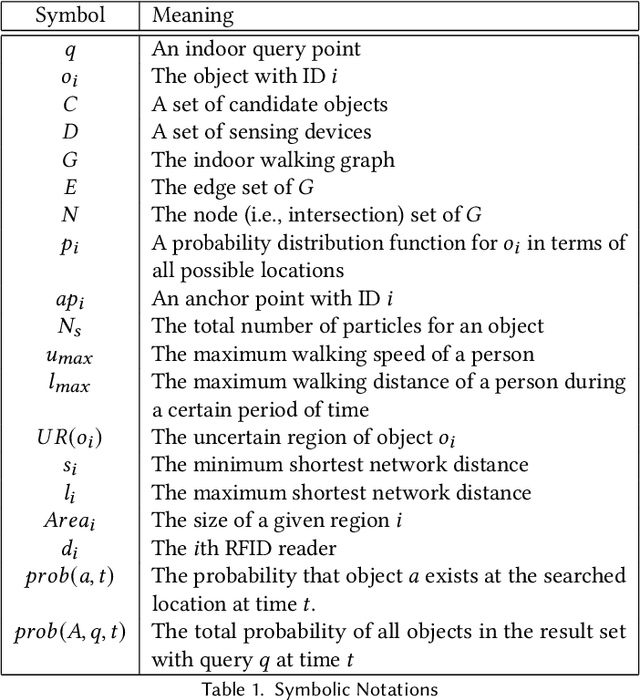

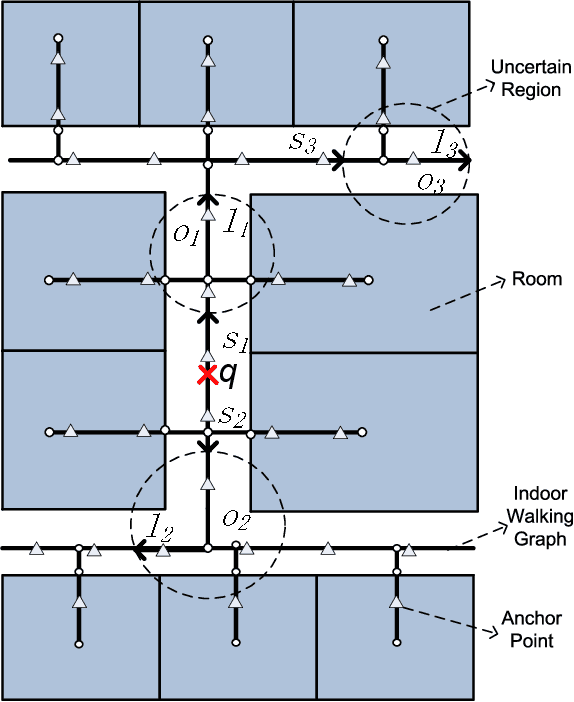
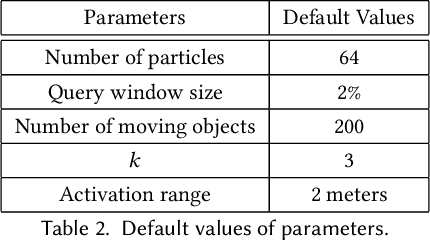
Abstract:People spend a significant amount of time in indoor spaces (e.g., office buildings, subway systems, etc.) in their daily lives. Therefore, it is important to develop efficient indoor spatial query algorithms for supporting various location-based applications. However, indoor spaces differ from outdoor spaces because users have to follow the indoor floor plan for their movements. In addition, positioning in indoor environments is mainly based on sensing devices (e.g., RFID readers) rather than GPS devices. Consequently, we cannot apply existing spatial query evaluation techniques devised for outdoor environments for this new challenge. Because Bayesian filtering techniques can be employed to estimate the state of a system that changes over time using a sequence of noisy measurements made on the system, in this research, we propose the Bayesian filtering-based location inference methods as the basis for evaluating indoor spatial queries with noisy RFID raw data. Furthermore, two novel models, indoor walking graph model and anchor point indexing model, are created for tracking object locations in indoor environments. Based on the inference method and tracking models, we develop innovative indoor range and k nearest neighbor (kNN) query algorithms. We validate our solution through use of both synthetic data and real-world data. Our experimental results show that the proposed algorithms can evaluate indoor spatial queries effectively and efficiently. We open-source the code, data, and floor plan at https://github.com/DataScienceLab18/IndoorToolKit.
 Add to Chrome
Add to Chrome Add to Firefox
Add to Firefox Add to Edge
Add to Edge